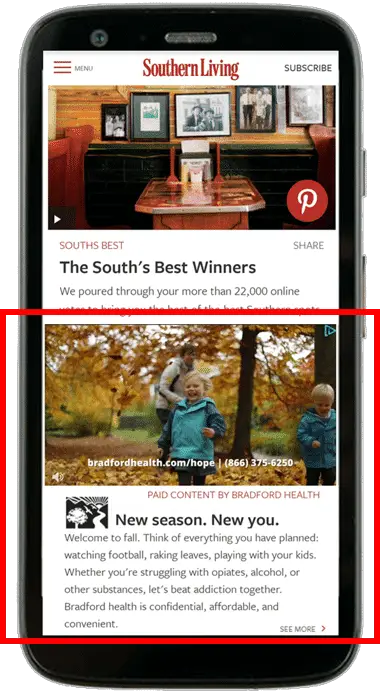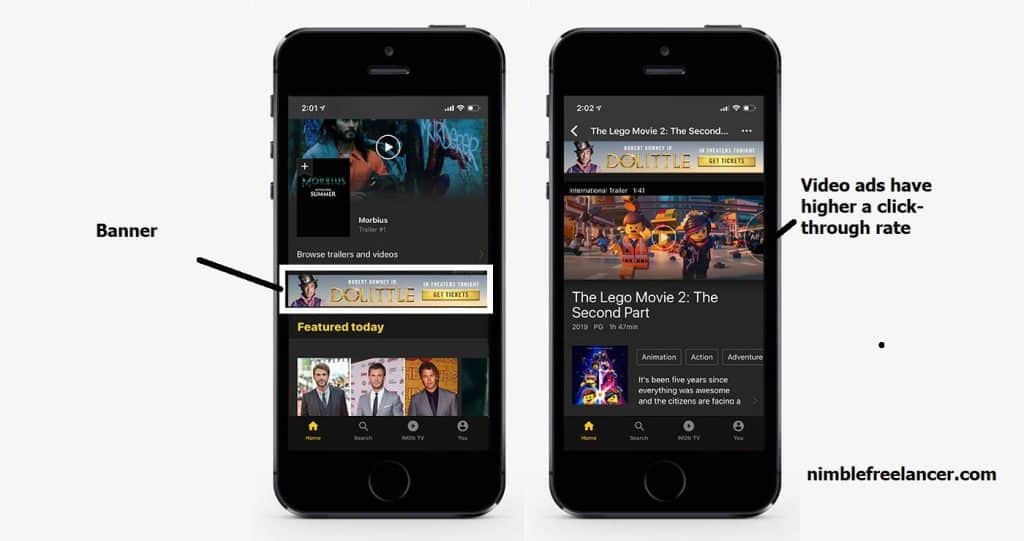The advertisement concept has evolved over the years, giving birth to digital marketing and a novel approach for brands and businesses. Previously, small-scale and prominent businesses depended on traditional marketing platforms such as printed media, visual aids, and billboards across the city. However, with the advent of technology, specifically the Internet, in the 1990s, there was a momentous alteration from traditional marketing methods to state-of-the-art and unbelievable marketing technology.
Nowadays, advertisement and brand promotion are performed mainly by digital channels, blog posts, and social media tools through PR agencies responsible for promoting through available platforms on the Internet. The audience is now exposed to marketing messages through magazines, newspapers, social media, and official websites. The audience has found a more profound way of watching their favorite content on different devices. This automatically means that advertisers and promoters need to broaden their horizons and think outside the box for nontraditional and unconventional ways of advertising.
Let us see what OLV marketing is:

What Does OLV mean in advertising?
OLV means Online Video and represents an engaging online ad format commonly used for broad brand awareness campaigns. In multichannel marketing, OLV ads appear in both in-stream and out-stream formats.
Online video ads can be:
- Video discovery ads
- Skippable in-stream ads
- Non-skippable in-stream ads
- Bumper ads
- Masthead ads
- Outstream ads
Television and digital content are now conveniently available on mobile phones, tablets, and smartphones. As a result, viewers can lay back and enjoy the popular range. This is relatively bad news for advertisers as the content-producing platforms have increased, but the resources and ways to reach those platforms must be reconstructed. In addition, multiple platforms have become fragmented and time-shifted audiences; therefore, advertisers need to ensure that their content is getting suitable viewers now. This novel concept is called addressable TV advertising, where publicists and advertisers show different ads to different households while enjoying the same content. As developers can move beyond conventional marketing, addressable advertising has evolved and modified advertising. The addressable advertisement aims to attain maximum viewership, mainly focused on demographics, interests, and habits. Addressable advertising is, therefore, user-oriented, explicitly targeting the audience.

What advantages do video ads have over traditional banner ads?
Video ads have advantages over traditional banner ads because of large video audiences. Big brands can promote and sell products using video ads and perform much better than conventional banner promotion because they can better explain all the advantages of their products in video format.
Online Video Advertising and Over the Top are two significant initiatives for businesses to launch brand-related advertisements to reach the target audiences with interesting creative content. Content marketers welcome interesting and captivating techniques to build their client base. Small companies and large-scale brands must realize the importance of accumulating mass consumers from all parts of the world. To achieve this, an integrated, multichannel, and heterogeneous marketing technique must be initiated. This includes using traditional methods such as television and radio and a mix of nontraditional resources such as social media content, public relations, and search and display to achieve the purpose. OLV is a well-known and integral highlight of the multichannel approach marketers use. Multinational implants have executed the OLV strategy, whereas small businesses have followed suit.
Through this approach, marketers can insert privatized advertisements within TV shows even if they are being watched in high demand rather than live programs. Some cable companies have especially reserved slots for advertisers to purchase.
Video ads have a higher click-throughWhat’s!!
What’s the difference between OTT and OLV advertising?
OLV is a broad term that describes any advertising via online video, while OTT advertising reflects how ads are delivered directly to consumers via internet-connected streaming devices.
Over-the-top (OTT) and Online Video Advertising refer to different forms of digital advertisement. With an OTT ad, marketers use their streaming services, such as YouTube or Netflix, to make commercials available on any device, regardless of whether you have a cable box installed at home; this includes smartphones, tablets, etcetera! On the contrary, while both these types provide ads through internet-connected devices, there’s one key difference: when it comes down to the delivery method, OTT is less targeted than its counterpart.
OLV Advantages
- More excellent audience reach: OLV ads can reach a large and diverse audience as people of all ages and demographics consume online video content.
- Higher engagement rates: OLV ads tend to have higher engagement rates than other online advertising, as viewers are more likely to watch a video than read text or view a static image.
- Increased brand awareness: OLV ads can help increase brand awareness and recognition, as they are often more memorable than other forms of online advertising.
- Enhanced storytelling: OLV ads allow for more immersive and impactful storytelling, as they can convey emotions and messages more effectively through visual and audio cues.
- Better targeting options: OLV advertising platforms offer advanced targeting options based on demographics, location, interests, and behavior, allowing advertisers to reach the right people at the right time.
- Measurable results: OLV advertising platforms provide detailed analytics and metrics on ad performance, allowing advertisers to track the effectiveness of their campaigns and make data-driven decisions.
- It leaves a more substantial impact.
Visual aids are considered more influential than audio and written content. Consequently, most advertising agencies use visual content to attract viewers’ interest. People are interested in watching exciting content, for most video segments are filled with advertisements. However, the advertisement video ads should be concise, to the point, and attractive. Advertisers must express and convince the viewers regarding their product by showing them that the product or facility is better than the rest.
Let us analyze attractive advantages that, in my opinion, are crucial:
- Establish a virtual connection.
More than 80% of Internet traffic is composed of online videos. Everything is done online and through visual formats. Sports, entertainment, weather, and news channels are enjoyed visually rather than written. Incorporating exciting and captivating advertisement content that is personal and emotionally associated with the viewers creates a long-lasting effect on the audience.
- Significant influence
Maintaining an upright influence is probably one of the essential purposes of advertisement. This inspiration can be measured by analyzing and evaluating the response from the viewers. Some people who see the ad are most likely to click on it and visit the official website. Marketers can also evaluate influence by checking the conversions to validate the result.
- A wider reach
Typically, traditional advertising is limited to a small group of people of a particular demographic. This contrasts with the OLV campaign, which covers a broad category of people of multiple demographics, each group, hobbies, and locations. In addition, with the help of a campaign, individuals who have already visited the official website can be re-targeted and include current owners and online shoppers of the service.
Many big businesses still use traditional advertisement as their primary means of spreading the news. However, it is essential to understand the online video approach and the addressable TV to increase the customer base and convince them about the product. With the help of addressable TV, advertisers can evaluate their targeting capabilities and analyze ROI. This approach targets parameters such as household income, race, ethnicity, and the presence of family members, children, and other determinants that regulate advertisement content. This concise and precise targeting can be purchased at a premium price, but it ensures the maximum reach to the people sitting in front of the TV. Instead of general demographics, this approach focuses on specific factors.
The right product, business, and service can target the right demographics in this digital age. For example, if you want to advertise your product entirely for dual income without kids, Hulu and YouTube are the appropriate options. Most of these brands also have analytical data to evaluate, comprehend, and analyze so that your content reaches their target audience and money is not wasted. This information also assists in providing tips and guidelines to reshape creative content. From browsing history to credit profiles, 0LV is consumer-oriented, ensuring that the content delivers suitable television screens to users.
OLV ads are proficient. These ads can be clicked on and lead to another, starting the conversion process. OLV connects the dots; therefore, more information and insight related to the contact is revealed to the users.
OLV is expected to lead in digital marketing for the next ten years. However, advertisers are still slow to adopt and execute OLV. As a result, most TV marketers are inclined to spend their budget on the traditional TV approach.
- Facebook Ads to Get Followers! - December 27, 2024
- ClickUp vs. Slack - December 20, 2024
- Mastering E-Commerce Analytics: A Blueprint for Success




